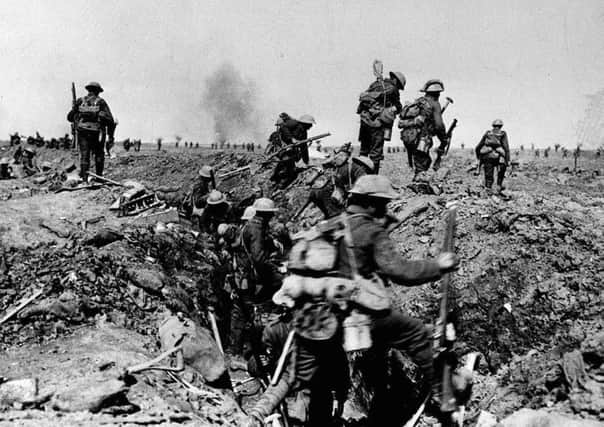The brave Sunderland heroes who died in the bloodiest battle ever seen


There are many local connections to the battle including the Sunderland men who gave their lives.
Today, we continue our look at the men linked to Sunderland Cricket and (Rugby) Football Club, who saw action on the Somme – with the help of club archivist Keith Gregson.
Advertisement
Hide AdAdvertisement
Hide Adl John Maurice Foster, born in 1890, was the son of a pianoforte and music shop merchant.
The family lived in Park Place East, apparently, for most, if not all of his life, and Jack was an Ashbrooke member in 1914 when ‘army’ was placed on his club record.
In 1911, he was working as a draper’s assistant.
He was gazetted as 2nd lieutenant in the 4th Gordon Highlanders (Territorial) in June 1915 and was killed in action on July 23, 1916.
His name appears on a casualty list for November 1916 as ‘previously reported missing now reported killed’.
Advertisement
Hide AdAdvertisement
Hide AdHe is buried at Caterpillar Valley Cemetery, Longueval. His name appears in the register of effects which indicates that the sum of just over £60 was handed over to his family in February 1917.
l William Worthington Wilson was the son of a master mariner and went to Bede School. In 1911, he was living in Azalea Avenue and was an apprentice marine engineer by the time he was 18.
His 21-year-old sister was head of the household.
He enlisted in September 1914 when he was 21 himself and told the Forces he was an engineer who wanted to join a Durham force.
John Byrne was the recruiting officer and placed him in the 18th DLI, also known as The Durham Pals. He noted that he had already served in the DLI 7th volunteers.
Advertisement
Hide AdAdvertisement
Hide AdWilliam was part of the Expeditionary Force in Egypt from December 1915 to March 1916 when he entered the Western Front.
At first, there was some doubt over what happened to him. His family feared he had been injured.
A 1916 telegram thought that he was wounded and was there ‘any news yet’ of him.
In fact, he had been killed in action on the first day of the Battle of the Somme and was in D Company.
Advertisement
Hide AdAdvertisement
Hide AdHe was a lance sergeant at the time, having served as a corporal and lance corporal during 1915. His service record has survived.
By the time his parents picked up his medals after the war, the family had moved to Liverpool.
l Arthur Osborne Bell lived in Chester Road, Sunderland and Ashwood Terrace.
Born in 1896, he was the son of an assistant overseer whose job would have been to look after Poor Law affairs in one of the local parishes.
Advertisement
Hide AdAdvertisement
Hide AdHe was a scholar at 14 and in 1913, he paid his membership to Sunderland Cricket and Football Club.
He went to Bede School and was still a student when, at the age of 19 years and seven months, he enlisted.
But he had a special request. He expressed a willingness to join the Durham County regiment.
This was in October 1914, so it is likely that he lied about his age. He served in the 18 th DLI/Lord Durham’s/Durham Pals and spent some time in Egypt at the end of 1915 and beginning of 1916.
Advertisement
Hide AdAdvertisement
Hide AdHe was killed in action on the first day of the Battle of the Somme and was in D Company – the same company as William Worthington Wilson.
His service record has survived and his effects were returned to the family in October 1916.
His father applied for and received his medals in 1920 – (he just qualified for the 1915 star). His father received just over £3 in 1916 and £7 and 10 shillings in 1919.
Keith would love to hear from more people whose ancestors served their country in the First World War.
If you can shed more light on them, including those at the battle of The Somme, contact us and we will pass on your information. Email [email protected].